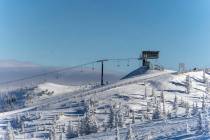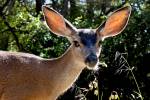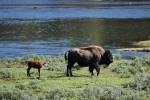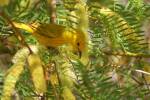Outdoor Briefs
THERE'S STILL TIME
Don't put that boat away just yet
Just as Memorial Day marks the official beginning of the annual boating season on Lake Mead and Lake Mohave, Labor Day marks the official ending. With their children heading back to school, many boaters put their boats away for the year. But that could be a big mistake.
"Some of the best boating water of the year is available right now. Boaters who put their boats away too early are really missing out," said Nick Duhe, boating education coordinator for the Nevada Department of Wildlife. "The water temperature is still reasonably warm, daytime temperatures are comfortable, the summer winds are gone and there is very little boating traffic."
FAIRLY COMMON
Watch bighorn sheep from a distance
Wildlife watching is fast becoming a popular, low-cost outdoor sport, and an increasing number of people want to know where they can go to have a good chance of seeing wild animals. In Southern Nevada, one the most popular animals for wildlife watchers is the desert bighorn sheep -- Nevada's state animal.
Though most animals tend to be very skittish, some herds of bighorn sheep are more tolerant of human activity than others. This makes bighorn sightings fairly common in Southern Nevada. However, there are still some things wildlife watchers need to keep in mind when seeking them out.
First and foremost, bighorn sheep, no matter where one finds them, are wild animals. As such, their behavior is unpredictable at best. When we get too close to them, for example, sheep can exhibit defensive behavior or retreat. Sometimes, in an attempt to put distance between themselves and people, the sheep will actually move into an area where they are in more actual danger, said Pat Cummings, a wildlife biologist with the Nevada Department of Wildlife.
At Hemenway Park in Boulder City, for example, people can enjoy a close encounter of the sheep variety by simply having a seat beneath one of the gazebos. The sheep frequently can be seen feeding in the park and relaxing in the shade.
"If people will just sit quietly and hold still, the sheep will come as close as they feel comfortable, but when people try to get closer, the animals exhibit avoidance behavior. The problem is, the sheep may react by leaving the park and moving to the grassy areas along the highway, where they are sometimes hit by automobiles. This, of course, is an unacceptable situation for both the sheep and human beings alike," Cummings said.
Another concern is the rut or breeding season. Because of Southern Nevada's variable climate, bighorn ewes can cycle and give birth year-round. Rutting, or breeding behavior, can occur at almost any time, but reaches its peak in August and September. During this time, the rams vigorously pursue receptive ewes and can become aggressive when competing with each other for a ewe's affections. Rams also can be aggressive toward people if cornered.
To avoid putting stress on the animals, wildlife watchers should always maintain their distance when observing bighorn sheep, or any big game animal for that matter, said Cummings. At Hemenway Park, "the gazebos are plenty close. There is no reason to approach any closer," said Cummings. In other locations, wildlife watchers should keep an eye out for any behavior that might indicate the sheep are anxious. Walking away is one indicator, stomping of the feet is another.
People also might see bighorn sheep along the highway below Boulder City or near the Hoover Dam, but motorists should not stop because they may startle the sheep and cause them to jump into a travel lane.























